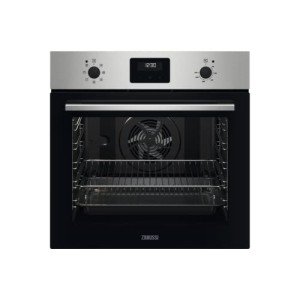
In modern kitchens, self-cleaning ovens have become a popular option for property owners seeking convenience and efficiency. These ingenious home appliances considerably lower the time and effort involved in traditional oven cleaning approaches. With numerous brands offering self-cleaning options, it can be challenging to choose which one best suits your requirements. This post provides an in-depth summary of the leading self-cleaning oven brands, their special features, and some often asked questions.
Self-cleaning ovens are developed with sophisticated technology that allows them to clean themselves with very little intervention from the user. The most typical approaches of self-cleaning are:
Pyrolytic Cleaning: This method includes heating up the oven to extremely heats, triggering food residue to ash, making it easier to wipe away.
Steam Cleaning: This strategy utilizes steam to soften food particles, which can then be easily wiped away after the cleaning cycle.
The following table summarizes a few of the very best self-cleaning oven brands readily available on the market today, including their trustworthy models, cleaning methods, crucial features, and typical rate varieties.
| Brand name | Cleaning Method | Secret Features | Average Price Range |
|---|---|---|---|
| Whirlpool | Pyrolytic | AccuBake temperature management, user friendly controls, large capacity | ₤ 600 - ₤ 1,200 |
| GE Appliances | Steam | Twin Turbo Defrost, WiFi connection, integrated air fry mode | ₤ 700 - ₤ 1,300 |
| KitchenAid | Pyrolytic | Even-Heat True Convection, quality finishes, customizable racks | ₤ 1,000 - ₤ 2,000 |
| Samsung | Pyrolytic | Smart technology combination, self-cleaning settings, Flex Duo technology | ₤ 800 - ₤ 1,500 |
| LG Electronics | Steam | SmartThinQ app compatibility, ProBake convection, easy-clean design | ₤ 1,000 - ₤ 1,800 |
| Bosch | Pyrolytic | European design, quiet operation, modern features | ₤ 1,200 - ₤ 3,000 |
Whirlpool
GE Appliances
KitchenAid
Samsung
LG Electronics
Bosch
When selecting a self-cleaning oven, prospective buyers need to consider the list below factors to discover the best fit for their kitchen and lifestyle:
Cooking Needs: Different ovens included different capacities and features. Assess how often you cook and what types of meals you prepare.
Cleaning Method: Decide whether a pyrolytic or steam cleaning alternative aligns much better with your needs. Self Cleaning Oven Improvements offers deeper cleaning, while steam cleaning is gentler.
Smart Features: Consider how crucial technology and connectivity are in your kitchen. Smart ovens can enhance cooking while offering higher control.
Budget plan: Be aware of your budget and think about the long-lasting benefits of purchasing more feature-rich models versus basic ones.
1. How often must I utilize the self-cleaning feature?It depends on use; nevertheless, many makers advise utilizing the self-clean feature after every 5-10 uses or when you notice a substantial accumulation of residue. 2. Is the self-cleaning process safe for pets?It is a good idea to keep family pets away from the kitchen area throughout the self-cleaning cycle, as the high temperature levels can be harmful. 3. Can I use the oven while it's in self-cleaning mode?No, it is not safe to utilize the oven while it remains in self-cleaning mode. The heats can harm food and present safety dangers. 4. Do self-cleaning ovens utilize a lot of energy?Self-cleaning cycles can utilize more energy than regular cooking, however energy-efficient models are crafted to reduce
consumption throughout the cleaning process. 5. Will self-cleaning damage my oven's interior?When utilized as advised, the self-cleaning function must not harm the oven's interior. Nevertheless, regularly examine the oven for wear and tear. Selecting the right self-cleaning oven can enhance your cooking experience while conserving you effort and time in maintaining cleanliness in the kitchen area. With top brands like Whirlpool, GE Appliances, KitchenAid, Samsung, LG Electronics, and Bosch
, consumers have a variety of quality options to think about. By assessing specific requirements, spending plan considerations, and technological choices, homeowners can make an informed decision that will improve their cooking adventures for several years to come.